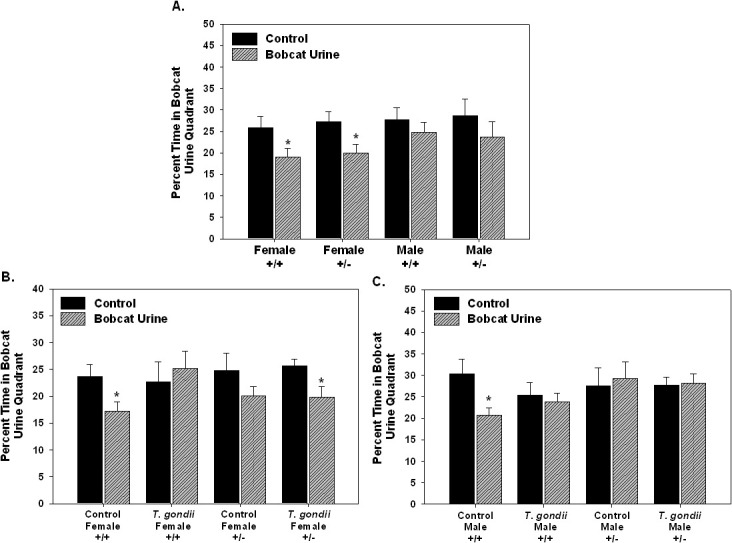Fig 3. To demonstrate aversion to bobcat urine, percent time spent in the quadrant with bobcat urine (Bobcat Urine) was compare to the percent time spent in the same quadrant from the preceding open field test (Control) for each treatment group.

In the first test (A.), female mice (both +/+ and +/-) showed significant aversion to bobcat urine as they spent significantly less time in the bobcat urine quadrant than in the corresponding quadrant from the open field test. No significant aversion was found using these parameters for the male mice. In the second test, after either a vehicle injection (Control) or T. gondii injection, the control female +/+ mice showed a significant aversion to bobcat urine that was abolished by injection with T. gondii (B). In contrast the control female +/- mice showed a trend toward aversion to bobcat urine but significant aversion to bobcat urine after T. gondii injection (B.). The control male +/+ mice showed significant aversion to bobcat urine that was also abolished by T. gondii injection (C.). In contrast, the male +/- mice showed no aversion to bobcat urine either in the control condition or after T. gondii injection. Comparisons based on paired t-test with p<0.05. Figure A: n = 18 female +/+; 21 female +/-; 29 male +/+; 18 male +/-. Figure B: n = 10 female +/+ controls; 6 female +/- controls; 5 female +/+ T. gondii; 10 female +/- T. gondii. Figure C: 17 male +/+ control; 10 male +/- controls; 10 male +/+ T. gondii; 8 male +/- T. gondii.
